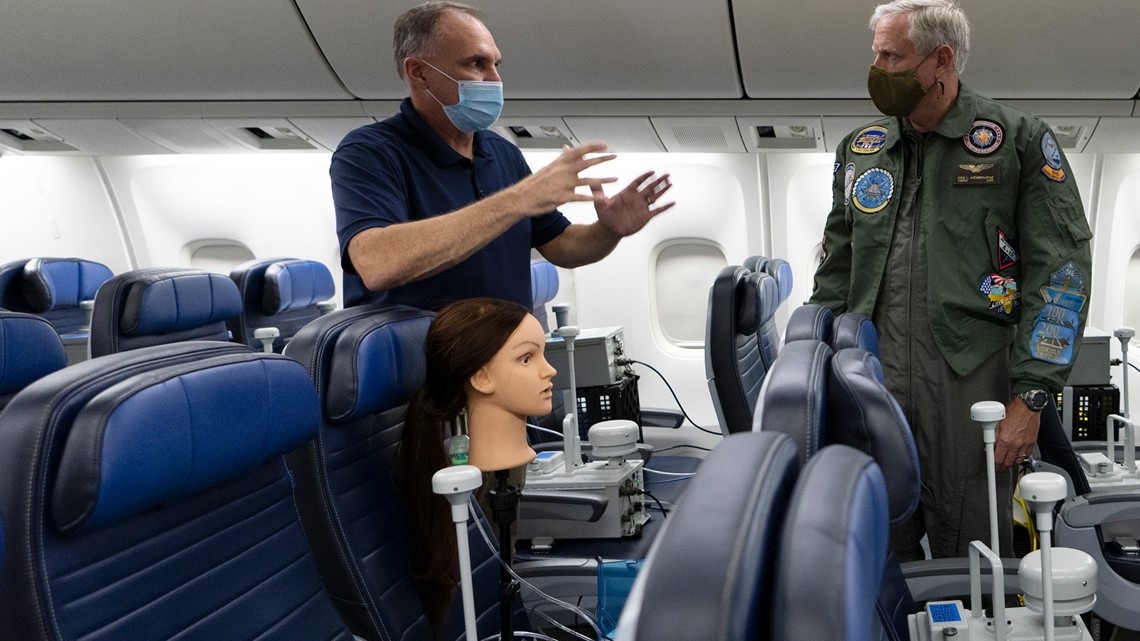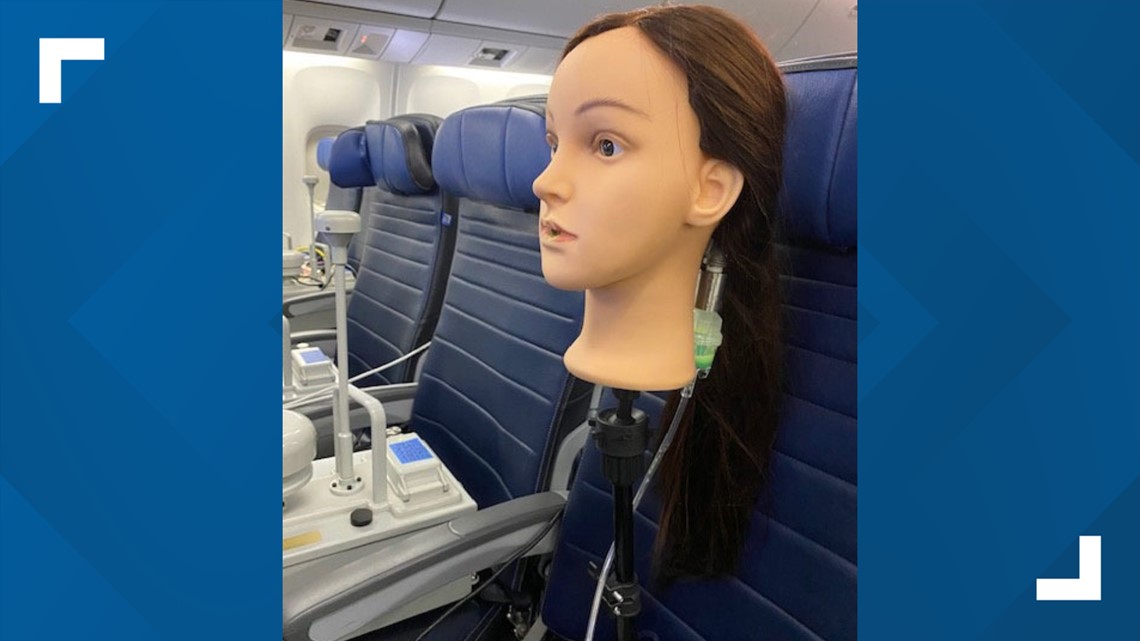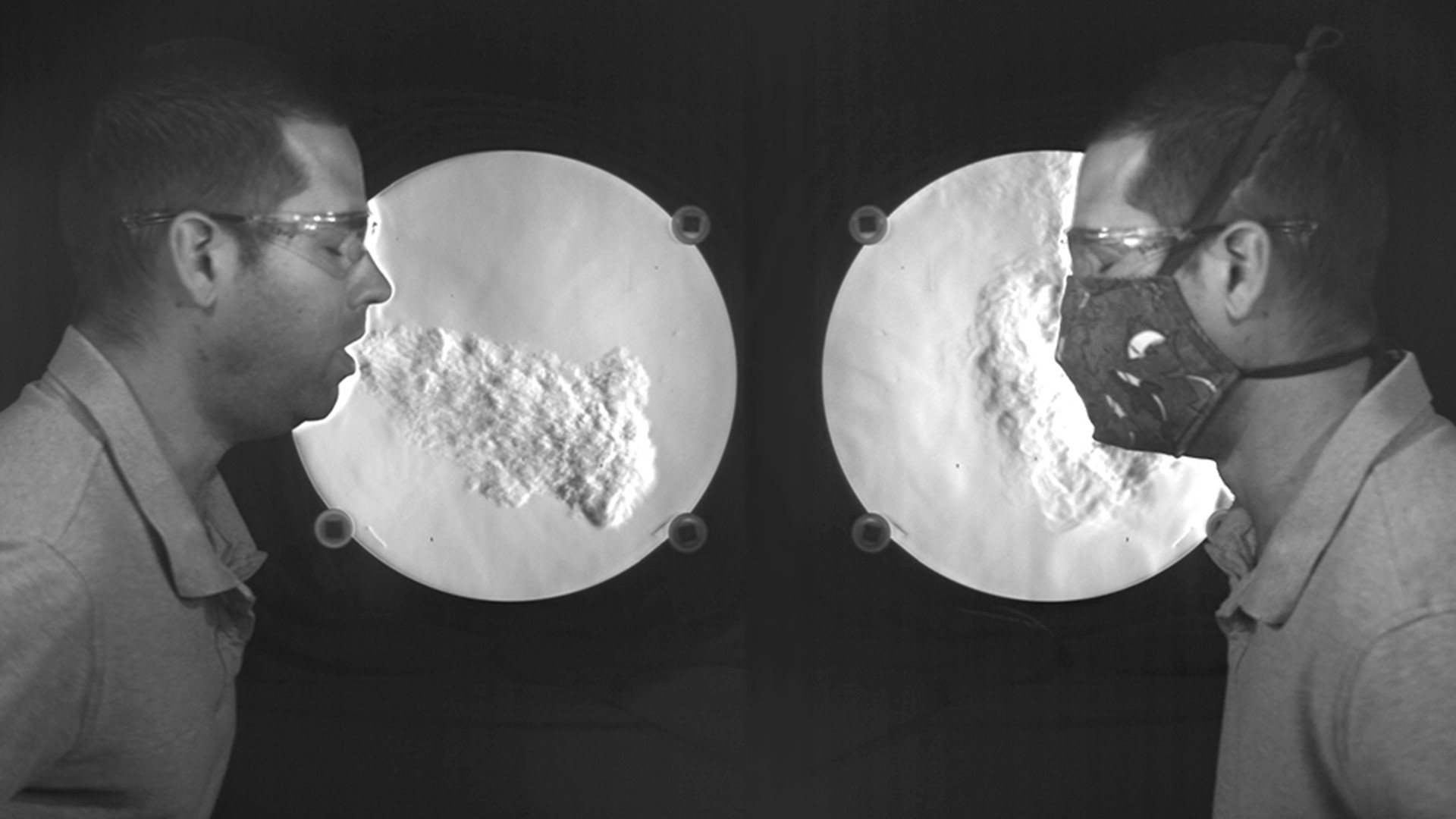WASHINGTON — Editor's note: The attached video shows a visualization of airflow around the mouth, nose with and without a facemask. It is not video from the study referenced in this story.
A Department of Defense and United Airlines study looking at the risk of catching the coronavirus while on a flight found that a person would need to be sitting next to an infected passenger for at least 54 hours to receive "an infectious dose" through the air.
The study was conducted by the U.S. Department of Defense and United Airlines.
Overall, researchers found that when everyone is wearing masks on a flight, very little of the virus spreads through the air, because of air circulation and filtering on planes.
Researchers used mannequin heads equipped with an aerosol generator that could mimic breathing and coughing. The generator released 180 million particles during each test, which took place in August at Dulles International Airport in Virginia.
After 300 tests, the study found that in Boeing 777 and 767 planes with 100% seating capacity there would need to be a minimum of 54 flight hours to "produce inflight infection." It added that the risk of aerosol exposure is minimal even during long-duration flights.
The study did have some limitations. It didn't account for larger aerosol droplets that people can spread when eating or talking without a mask on. It also didn't review the risks associated with traveling to the airport and waiting to board the flight. It also did not look at the impacts if a person moved around or didn't just face forward.
Officials and scientists involved in the study said Thursday that the results were encouraging, but noted the limitations.
“Within the scope of the test, the results showed an overall low exposure risk from aerosolized pathogens like COVID-19 on these aircraft,” Vice Adm. Dee Mewbourne, the deputy commander of the U.S. Transportation Command, said, according to The Washington Post.
United Airlines, which provided the planes and air time for the testing, applauded the study's conclusion and declared the risk of coronavirus exposure in an airplane is "almost non-existent" on full flights.
“99.99% of those particles left the interior of the aircraft within six minutes,” United Airlines Chief Communication Officer Josh Earnest said in a statement to ABC News. "It indicates that being on board an aircraft is the safest indoor public space, because of the unique configuration inside an aircraft that includes aggressive ventilation, lots of airflow."


Sensors placed throughout the plane during testing showed how much of the aerosol particles spread throughout the cabin. The study found that masks or face coverings dramatically reduced the transmission rate. The risk was still higher for people in rows in front and behind an infected individual, but still minimal on average.
The researchers also noted that a passenger's overhead air supply doesn't make a "significant impact on aerosol risk," so those can be primarily used based on a traveler's comfort.



